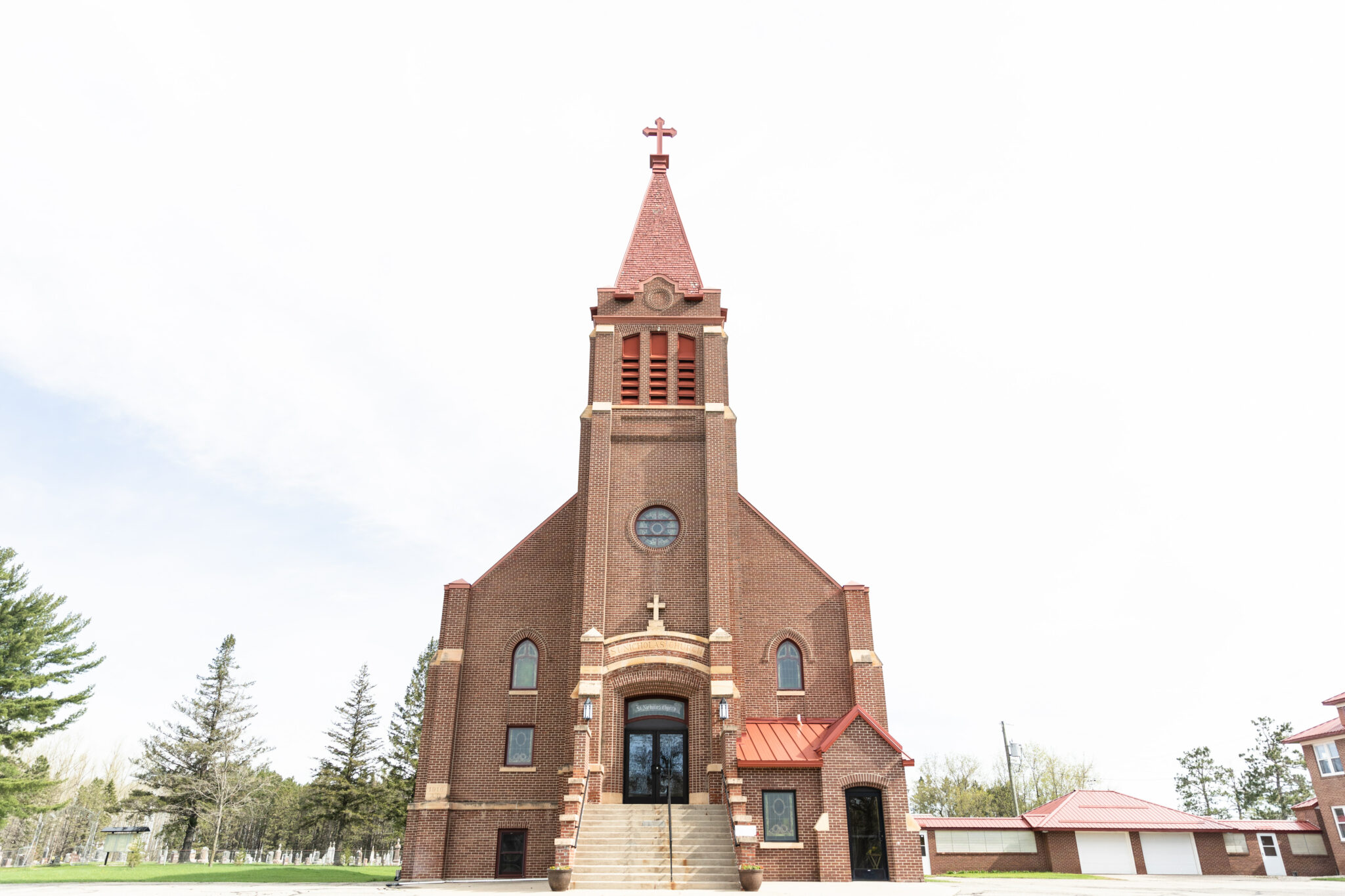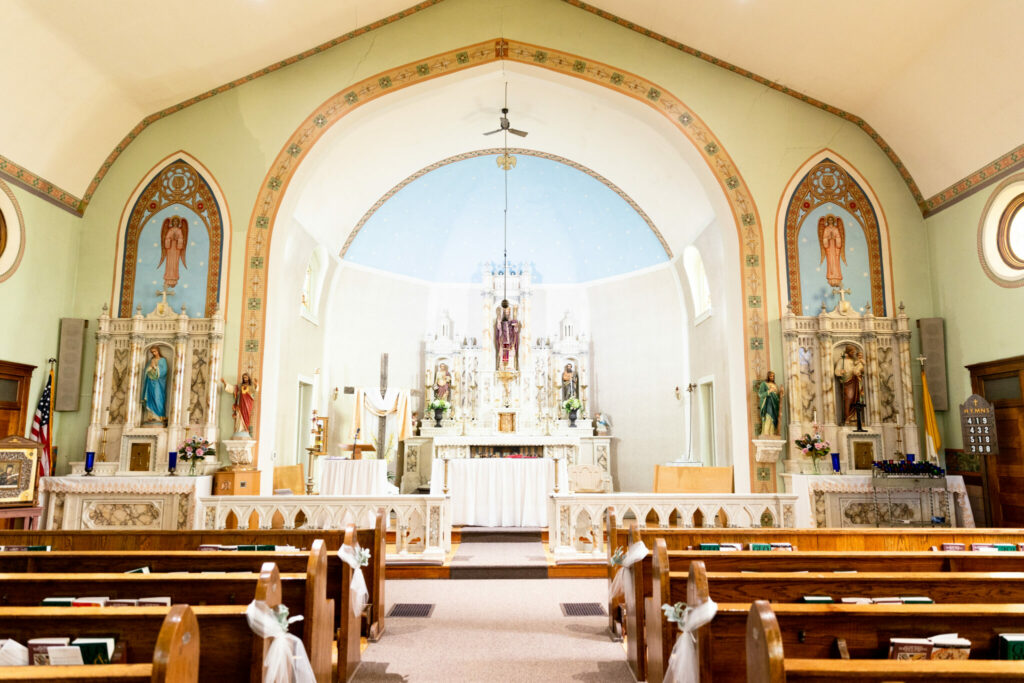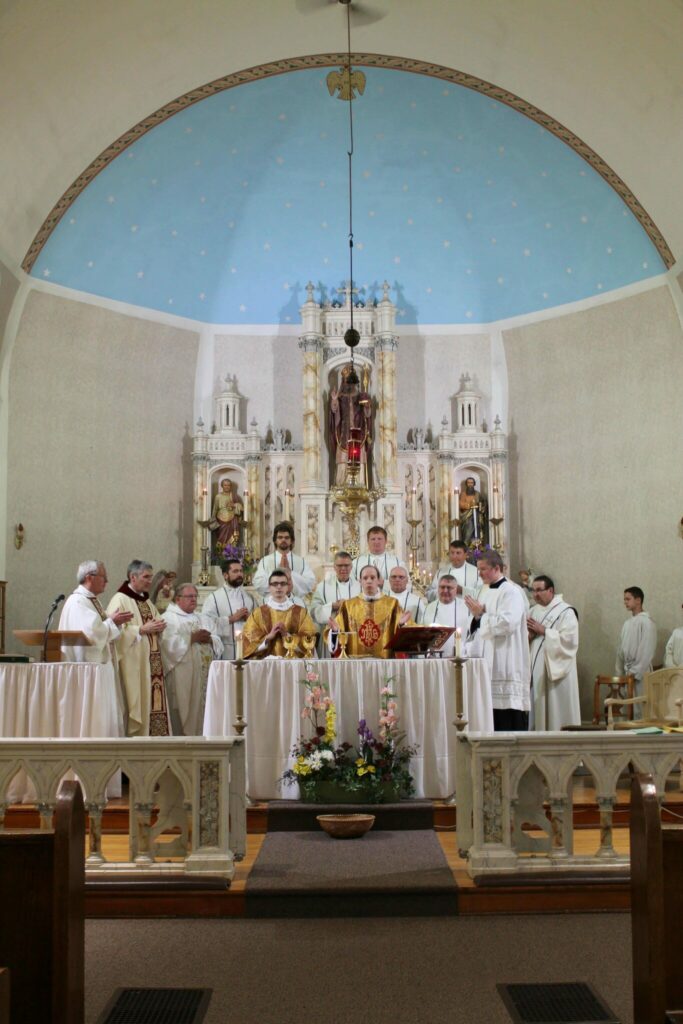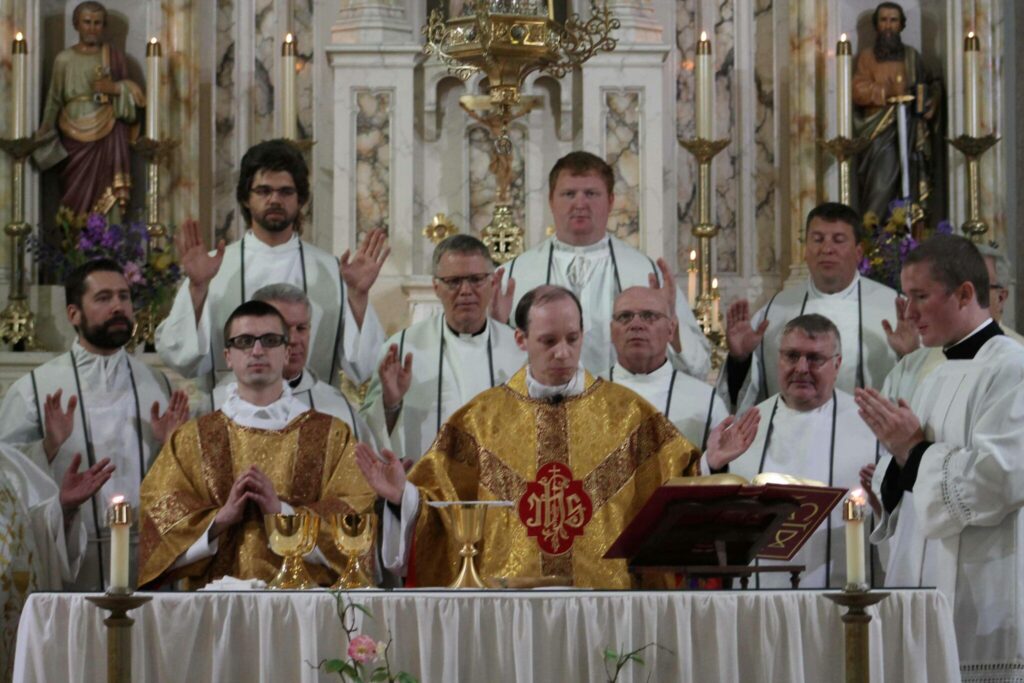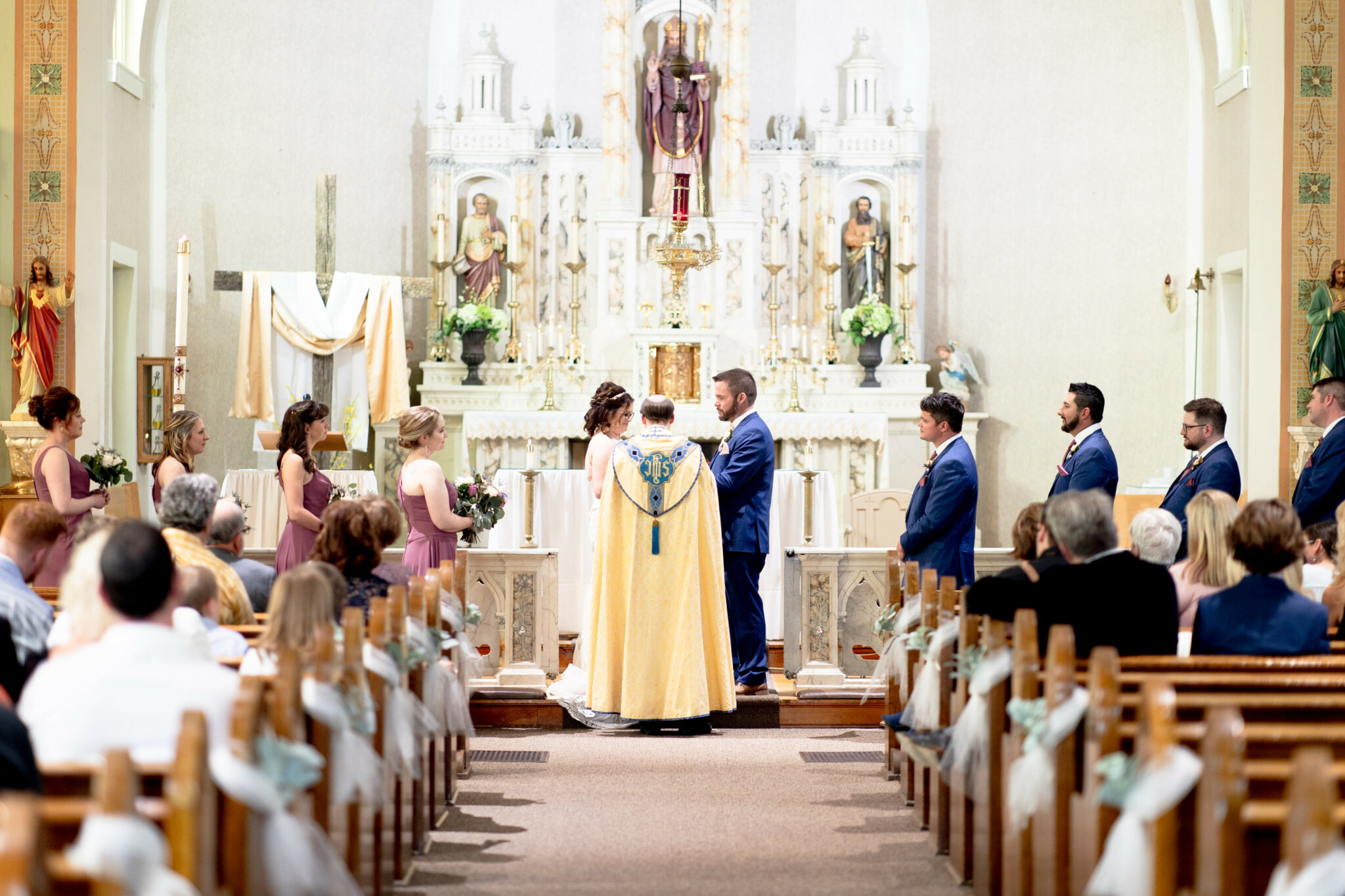Mission
Our mission is to build God's Church across generations by living the Eucharist.
Our History
History – through 2000
St. Nicholas Parish began as a Missionary Outpost
By: Father Jeff Ethen
(From the 2000 Directory of St. Nicholas Catholic Church)
St. Nicholas Catholic Church in Belle River Township, the second oldest in Douglas County, owes its early existence to geography. Missionary priests used mission parishes located a day’s journey apart. St. Nicholas Parish sat between Catholic parishes at Long Prairie in Todd County and Millerville in Western Douglas County.
St. Nicholas Parish began in 1870, almost twenty years before the Diocese of St. Cloud was carved out of the St. Paul Vicariate in 1889. Famed Minnesota Indian and European settler missionary Fr. Xaviar Pierz made sweeping circles throughout the state, stopping in turn at Belle River to say the Mass and perform sacraments. The Millerville Catholic mission was older than Belle River’s and became the sacramental record repository for the scattered Catholics throughout the Northwest. He was appointed Director of Indian Missions and tried to reconcile the bad blood brewing between the Chippewa and Winnebago who, pushed off ancestral territory by United States treaties, intermingled disastrously on leftover land.
Pressure came also from European immigrants who settled in the Minnesota Territory. Population, more than politics, forced Fr. Pierz to ask for more pastoral help. Assistance arrived from various sources in the forms of pioneer priests Canon di Vivaldi, Joseph Buh, Ignatius Tomazin, who was closely associated with St. Nicholas; and Fr. James Trobec, who later became bishop of the St. Cloud Diocese in 1897. Help came also from the Benedictine priests who established an abbey in Collegeville, west of St. Cloud, and St. Alexius Priory in Osakis.
Long before the first of three churches were built on St. Nicholas Parish property, masses were held by Frs. Pierz and Tomazine in the homes of Frank Quinn, Sr. and Nicholas Botzet. (When the third and present church was built in 1916, all the parishioners with the name Nicholas were pressed into paying for the new St. Nicholas statue above the main altar).
The Catholic population in Riverdale Township, since changed to Belle River, was sufficient by 1870 to form a parish and build a church. German immigrants were the largest ethnic group in the township, with a number of Austrian, Dutch, Irish, and a few Czech families. Twenty acres of land for the church were donated by the Frank Quinn and John Clousen families. The original log church was dedicated in 1871 by St. Paul Archbishop Thomas L. Grace.
The log church was replaced by a wooden structure in 883 and a rectory was built the following year. Visiting priests stayed in the rectory though the first permanent resident pastor, Ignatius Lager, wasn’t assigned until 1890. He expanded the rectory to accommodate a school, which never materialized, and was used instead for a winter chapel. In a strange legal twist, the church property was almost lost to the heirs of St. Cloud Diocese Bishop Otto Zardetti when it was discovered the property title wasn’t transferred from the retiring Zardetti to the new bishop. Pastor Tomazin spent considerable time and persuasion to get the Zardetti relatives to sign the quit claim deed. After a quick succession of pastors, Fr. Emil Steinach settled down for an extended pastorate in 1908. He was young and popular. Parish societies were created, such as the St. Nicholas Society for young and single men, St. Agnes for the young women, and St. Anne’s for the Christian Women organization, and St. Joseph for the married men. The children were gathered under the Holy Childhood of Jesus program. A movie projector was purchased and shows were screened in the church basement. Later, Fr. Theodore Rams established a drama club which performed three act plays and raised funds.
These programs evolved with the names of the groups changing or dropping, but all parishioners today continue to work toward the parish’s spiritual, material and social well-being.
A smoldering fire started by the charcoal incesor used for benedictions destroyed the church on August 8th, 1915. The curling black smoke and floating shingles could be seen for miles around. Fr. Steinach, with the help of visitors, saved some of the church vestments and utensils. The winter chapel was pressed into service until the larger replacement church, built of brick, was erected the following year. The parish saved time by using a scaled down set of blueprints from the Fergus Falls Catholic Church.
Every parishioner was urged to help rebuild. Families contributed toward the cost of new statues, stations of the cross, stained glass windows, and the bells. The present church was dedicated Oct. 15, 1916.
St. Nicholas was responsive to needs outside the parish boundaries. Collections were taken up over the years of World War I relief in Europe and for victims of the 1906 San Francisco earthquake and the devastating 1919 Fergus Falls tornado. The parishioners supported the various ministries of the Franciscan Sisters of Little Falls. Four women from the parish entered religious life, with three joining the Franciscans and one entering the Benedictine order. Acclaim was also given to three parishioners, Norma Hintzen, Rudolph Zimmerman, and Joseph Stoetzel, who received the Bishop’s Medal of Honor in 1970.
The church interior was lightened in 1930 with brighter paint, and major renovations took place in the mid-1950s. Tree groves were later planted around the church yard and cemetery.
Following nearly three decades of missionary priests and visiting clergy, the first resident pastorates started in 1908. Fr. Emil Steinach, 1908-23; Fr. John Schritz, 1923-24; Fr. Theodore RAms, 1924-46; Fr. John Bussman, 1946-54; Fr. Sylvester Gall, 1954-58; Fr. Arthur Hoppe, 1958-61; Fr. Paul Schmelzer, 1961-64; Fr. Irvin Braun, 1964-74; Fr. Walter Bednark, 1974-88; Fr. Frank Poncelete, 1988-92; Fr. Jeff Ethen, 1992-present.
